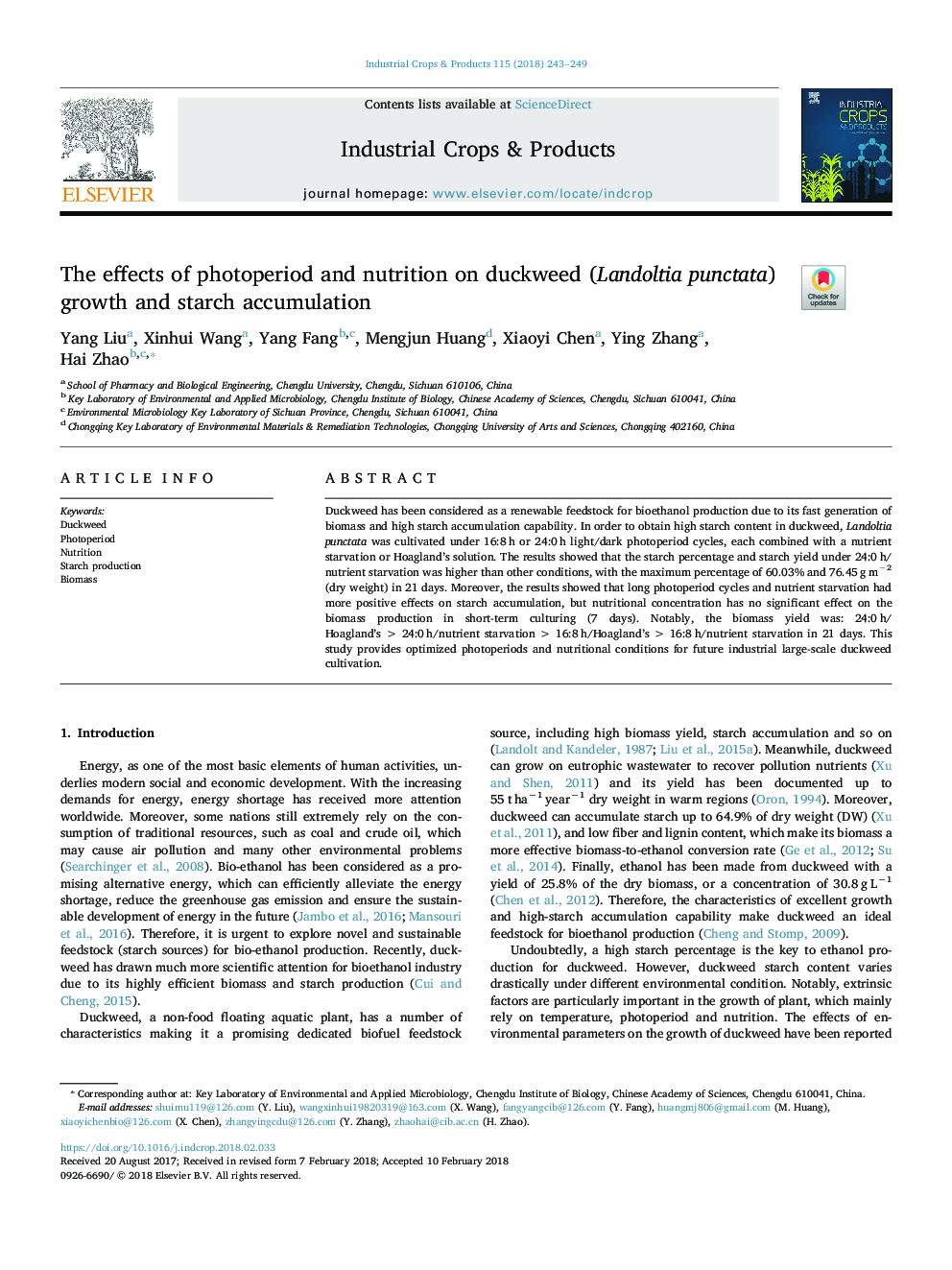| Article ID | Journal | Published Year | Pages | File Type |
|---|---|---|---|---|
| 8880330 | Industrial Crops and Products | 2018 | 7 Pages |
Abstract
Duckweed has been considered as a renewable feedstock for bioethanol production due to its fast generation of biomass and high starch accumulation capability. In order to obtain high starch content in duckweed, Landoltia punctata was cultivated under 16:8â¯h or 24:0â¯h light/dark photoperiod cycles, each combined with a nutrient starvation or Hoagland's solution. The results showed that the starch percentage and starch yield under 24:0â¯h/nutrient starvation was higher than other conditions, with the maximum percentage of 60.03% and 76.45â¯gâ¯mâ2 (dry weight) in 21 days. Moreover, the results showed that long photoperiod cycles and nutrient starvation had more positive effects on starch accumulation, but nutritional concentration has no significant effect on the biomass production in short-term culturing (7 days). Notably, the biomass yield was: 24:0â¯h/Hoagland'sâ¯>â¯24:0â¯h/nutrient starvationâ¯>â¯16:8â¯h/Hoagland'sâ¯>â¯16:8â¯h/nutrient starvation in 21 days. This study provides optimized photoperiods and nutritional conditions for future industrial large-scale duckweed cultivation.
Keywords
Related Topics
Life Sciences
Agricultural and Biological Sciences
Agronomy and Crop Science
Authors
Yang Liu, Xinhui Wang, Yang Fang, Mengjun Huang, Xiaoyi Chen, Ying Zhang, Hai Zhao,
